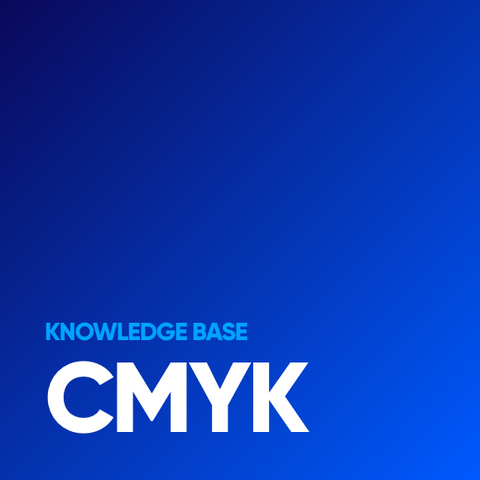Ah, the dazzling universe of CMYK!
An electrifying realm where colors are not just perceived but profoundly experienced, embodying emotions and vitality into designs! Let’s embark on a vibrant adventure into the fascinating world of print design, spearheaded by the famed quartet: Cyan, Magenta, Yellow, and Key (Black)!
The Heartbeat of Colors: CMYK’s Soul
CMYK, while seemingly straightforward, quietly veils a rich, intricate world of color blending. Birthed from subtractive color theory, this system can summon a vast and varied spectrum, enabling a million diverse visions in print. Each hue and shade creates its symphonic melody, crafting a visually harmonious concerto that speaks directly to the viewer's sensory perceptions.
Historical Hues: Tracing the Roots of CMYK
The story of CMYK doesn't start in the modern age of printers and digital designs but traces its roots back to the early experiments with color printing. These experiments laid the groundwork for developing a color model that combined basic colors to produce a myriad of hues. Over the decades, this understanding deepened, allowing CMYK to evolve into the sophisticated system we rely upon today.
The Art and Science of CMYK Color Combinations
While the basics of CMYK are well understood, the mastery lies in understanding the myriad combinations and overlays these four inks can produce. A slight change in the percentage of one color can yield a drastically different hue. Consider the difference between a cerulean blue (which may lean heavily on cyan with a touch of magenta) and a royal blue (which might blend equal parts of cyan and magenta). The artistry here lies in the understanding and mastery of these combinations to achieve the desired result.
Technical Tenets: Navigating the CMYK Printing Process
For those seeking a more technical grasp, it’s essential to understand dot gain, overprinting, and the importance of color profiles. Dot gain, or the spread of ink on paper, can change the appearance of the printed color. Overprinting, where inks are printed on top of each other, can be used intentionally to create specific color effects or avoided to prevent unwanted results. Moreover, using the correct color profiles ensures that the colors you see on a computer screen match those in print, a crucial aspect of professional design and printing.
The Vibrant Quartet: Individual Roles in the Symphony
Delve deeper and appreciate each component color in the CMYK model, recognizing that each tells its unique, vibrant tale. The tranquil Cyan mirrors the serene, cool tones of peaceful ocean vistas. Magenta encompasses a passionate, pulsating life force, intertwining the warmth and zest of red with the calm composure of blue. Yellow, an emblem of bright, sunlit days, encapsulates warmth, joy, and lightness, casting its golden hue across the color spectrum.
Intricate Harmonies: The Magical World of Color Mixing
Why the dominance of CMYK in printing? The secret lies embedded in the art and science of color mixing. Contrary to the additive RGB model, which bathes in the luminous aura of digital displays, CMYK steadfastly takes the reins when transiting designs from the virtual domain into our physical realm. This subtractive color model expertly manages the addition and subtraction of light, meticulously layering inks to build images that resonate with both the eyes and soul.
Embracing the Physicality of Print Design
Embarking from digital creation to physical print is an alchemical process, translating pixels into ink, ensuring that every drop falls precisely and intentionally. CMYK stands as a sentinel, safeguarding the transition of designs from screen to paper, ensuring fidelity and vibrancy, maintaining the integrity of every shade and nuance, and transforming our digital dreams into vibrant, tactile reality.
CMYK Across Mediums: From Books to Billboards
The magic of CMYK isn't limited to a particular medium; it’s omnipresent. Think of the crispness of a freshly printed novel, where the words jump off the page; the vibrancy owes much to the CMYK process. With their captivating visuals, brochures rely heavily on CMYK for depth and detail. And let's not forget the massive billboards that paint our cityscapes. No matter how grand in scale, each image begins with the subtle dance of those primary inks: Cyan, Magenta, Yellow, and Key.
The Timeless Impact of Well-Crafted Prints
Mastering CMYK in print design enables artists and designers to transmute their imaginative visions into tangible creations that speak, breathe, and interact with the physical world. A well-crafted print, imbued with the right hues, can evoke emotions, stir memories, and create lasting impacts that resonate through time and space.
In every stroke, every blend, and every hue, CMYK finds its place as the unsung hero, the subtle maestro orchestrating a visual symphony that dances across the paper. Unlocking its secrets is akin to acquiring a magical key capable of unleashing unbridled creative potential, bridging visions with reality, and crafting printed designs that are not just seen but deeply felt.
Facing the Future: Innovations and Evolutions in CMYK Printing
The journey of CMYK is dynamic. As technology advances, so does the realm of print design. Modern printers are achieving even greater color accuracy and detail. Innovations in ink composition and printing techniques allow for richer blacks, more vibrant colors, and previously unimaginable finishes. As we move forward, the relationship between digital design and print becomes even more nuanced, with CMYK continuing to play a crucial role in bridging the gap.

CMYK





